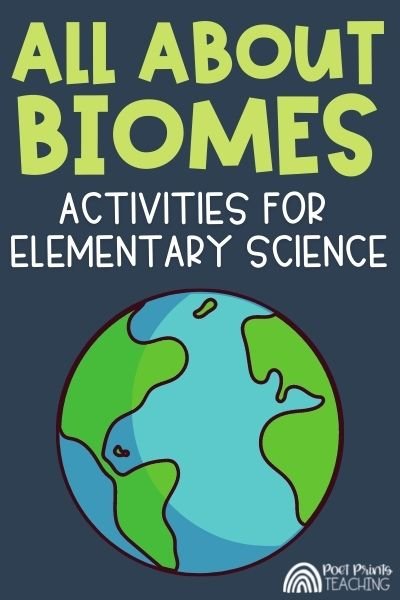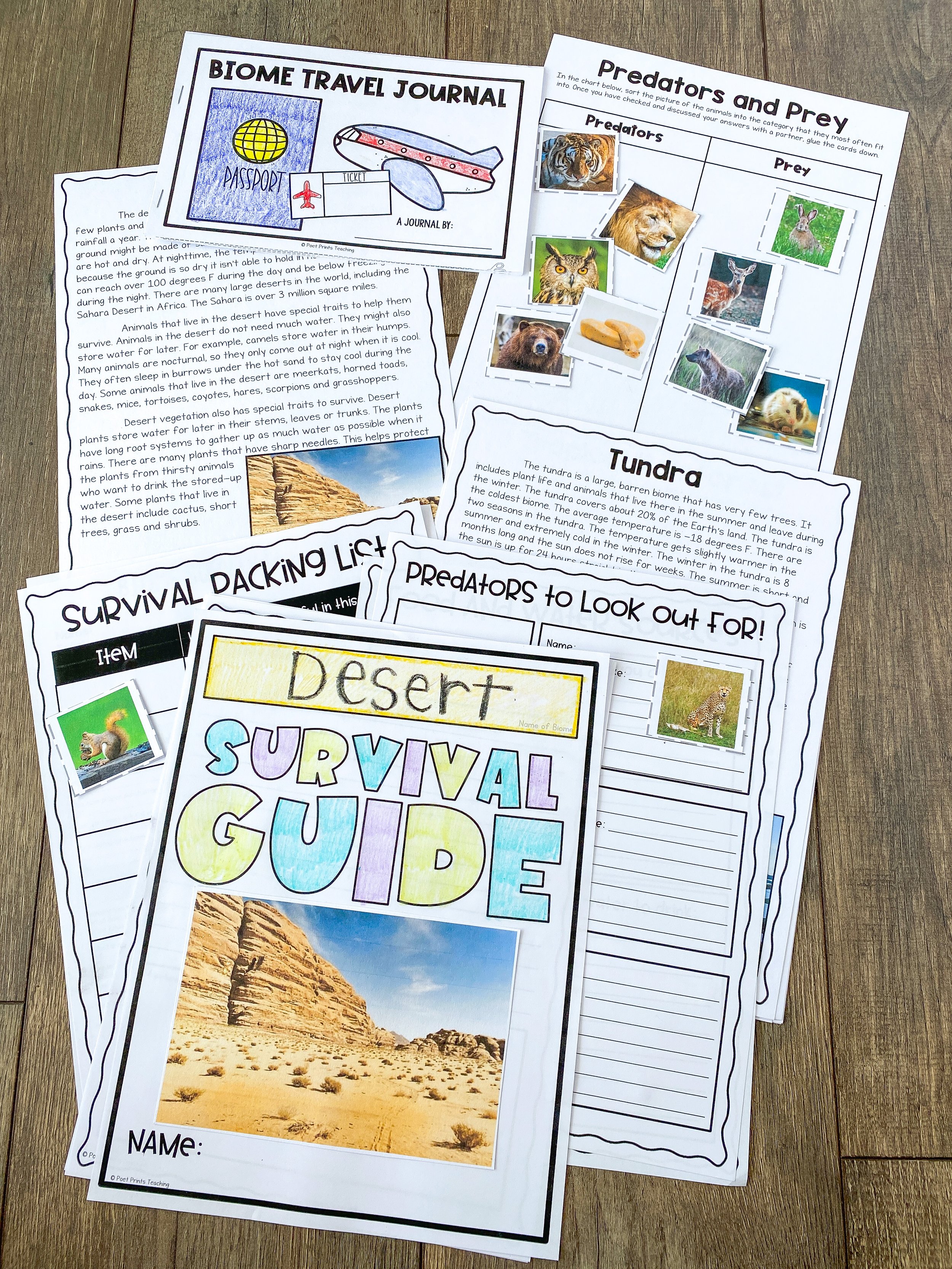Around the World - Ideas for a Biomes Lesson Plan
There are so many exciting things to learn about biomes in upper elementary. Students can delve into learning the seven biomes of the world, research animals that live in each place and get a better understanding of the biome’s characteristics. There really is something for every student and every interest. Let’s check out some interactive biome lesson plans.
What is a Biome?
A biome is a habitat with unique vegetation, climate and wildlife. The plants and animals in each biome have specific traits that help them survive.
What are the 6 Biomes of the World?
There are six major biomes on the Earth. These include desert, temperate rainforest, tropical rainforest, marine biome, savanna (or grassland) and tundra.
Biomes Videos
As a fun introductory activity, you might want to watch a video or two about biomes. Here are a couple videos I found on YouTube:
This video introduces four major biomes: tundra, forest, grassland and desert. It’s a cartoon and goes over some of the different characteristics and animals found in each biome.
This biomes video takes a look at five biomes: desert, grassland, forest, aquatic and tundra. It also goes over some of the different characteristics and animals found in each biome. It uses real video footage of each video. We break out our sketchbooks and make a few diagrams as we watch.
Creative Writing Activity
The ‘Biome Travel Journal’ is a great way to combine reading, writing, and science!
I love combining science with other subjects: science and art, science and reading, science and writing.
This activity combines reading and writing in an engaging way to help students learn about biomes. The Biomes Travel Journal asks students to imagine that they are traveling to the six different biomes.
Using non-fiction reading passages, students will write a travel journal all about what they see and experience in the six biomes they visit. Not only will students practice their literacy skills while doing science, but they will also be able to get a little creative!
Plan Your Biomes Lessons with One Click!
Are you looking for a FAST way to plan out your biomes unit that already includes reading passages and TEN scripted lesson plans?
In just a few clicks you can grab all of the pieces you need: lesson plans, projects, activities, and assessment.
Click and print. Planning is really that easy.
Biome Diorama
If you want to combine science with art, try giving each student a shoebox or a paper plate. Then, using materials like construction paper, plasticine and magazines, ask students to create a diorama of what the different biomes look like. For example, if a student were creating a hot desert, they might use yellow plasticine to create sand, green construction paper to create cacti and other small shrubs, and cut out pictures of animals to show which animals live in the desert.
assess it with a Survival Guide
Pages from the Biomes Survival Guide project.
After your students have had a sufficient time to learn about the biomes, a Biomes Survival Guide is the perfect way to assess learning with a project.
This is a great chance for students to present everything they have learned about a specific biome, and show that they understand the bigger concepts like climate, predators, food sources, and more!
I’m a big fan of summative assessments that go beyond tests/quizzes. This is an awesome way for students to show what they know in a way that isn’t time-sensitive and encourages creativity and critical thinking.
Biome Twenty Questions
Another fun activity you could do is a biome guessing game. After learning about the characteristics and animals of each biome, it’s time to put your student’s knowledge to the test. Put a piece of tape on each student’s back. On each tape, is the name of one of the biomes. Students then have to go around the classroom asking ‘yes’ or ‘no’ questions about the biome on their back. As they gain information, they will be able to guess which biome is on their back.
These biome lessons are great for engaging our students in fun ways as they learn.





